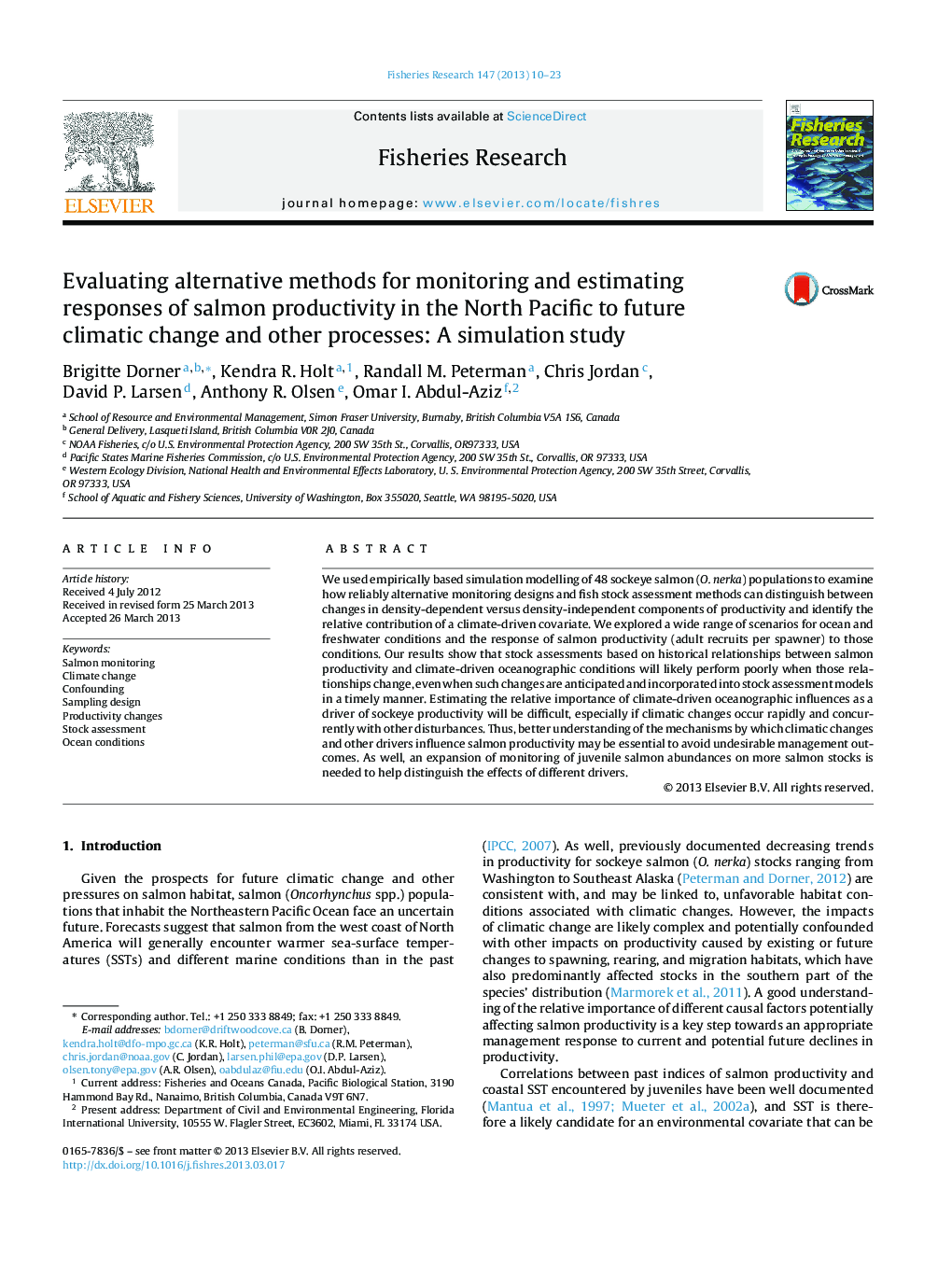| Article ID | Journal | Published Year | Pages | File Type |
|---|---|---|---|---|
| 4543075 | Fisheries Research | 2013 | 14 Pages |
•To properly manage fisheries, managers must understand causes of observed changes.•We determined how reliably salmon monitoring designs work at advising managers.•We simulated the dynamics of 48 sockeye salmon populations with climatic change.•Separating climatic effects from other impacts on salmon productivity will remain difficult.•We need better monitoring for understanding climatic effects on salmon productivity.
We used empirically based simulation modelling of 48 sockeye salmon (O. nerka) populations to examine how reliably alternative monitoring designs and fish stock assessment methods can distinguish between changes in density-dependent versus density-independent components of productivity and identify the relative contribution of a climate-driven covariate. We explored a wide range of scenarios for ocean and freshwater conditions and the response of salmon productivity (adult recruits per spawner) to those conditions. Our results show that stock assessments based on historical relationships between salmon productivity and climate-driven oceanographic conditions will likely perform poorly when those relationships change, even when such changes are anticipated and incorporated into stock assessment models in a timely manner. Estimating the relative importance of climate-driven oceanographic influences as a driver of sockeye productivity will be difficult, especially if climatic changes occur rapidly and concurrently with other disturbances. Thus, better understanding of the mechanisms by which climatic changes and other drivers influence salmon productivity may be essential to avoid undesirable management outcomes. As well, an expansion of monitoring of juvenile salmon abundances on more salmon stocks is needed to help distinguish the effects of different drivers.
